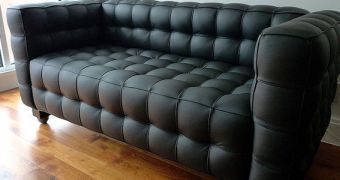A group of engineers from the Massachusetts Institute of Technology (MIT) in Cambridge announces the development of a new technique that coerces bacteria into creating materials that can be used for a wide variety of applications. Genetically engineering Escherichia coli cultures could potentially lead to living materials that can be molded and shaped in any way we see fit.
The new efforts are part of a larger effort to make the organic world just as programmable as the digital one. Details of how this can be accomplished for microorganisms have been published in a paper entitled Synthesis and patterning of tunable multiscale materials with engineered cells, which appears in the March 23 issue of the top scientific journal Nature.
MIT associate professor Timothy Lu told The Register in an interview that the team was basically interested in achieving a way to organize and synthesize non-living material systems by using living cellular communities. These tools of synthetic biology could in the near future be used to create new types of materials from the ground up, he added.
In a series of new experiments, scientists were able to coerce E. coli bacteria into producing conducting biofilms. In some instances, these biofilms were studded with quantum dots, making this research one of the first ever to achieve such a feat. Microorganisms were also successfully used to arrange gold nanowires in particular patterns, the team adds.
Lu explains that the new study may be an important step for developing methods of mass-producing cell-based material factories. Further down the line, the MIT team envisions the creation of living materials capable of emulating the desirable properties found in naturally-occurring materials, such as bones and trees.
E. coli were used in this study because they naturally produce biofilms that contain amyloid fibril proteins. What researchers did was inhibit the bacteria's ability to produce a repeating chain of protein units called CsgA. Instead, the E. coli were manipulated to produce these units only in the presence of a molecule called AHL. This allowed scientists to control when the bacteria produced these proteins.
“The bacteria secrete small molecules they use to communicate with each other. We co-opted that comm module [and] told one group of bacteria to tell the other group of bacteria when to turn on the other's creation of bacteria,” Lu explained.
“Over time the more of the signal is present the more comes out of the received cell. Over time more and more of the material will be dominated by what the receiver cell is making. There's no master architect behind it. There's emergence in this property,” he added.

 14 DAY TRIAL //
14 DAY TRIAL //